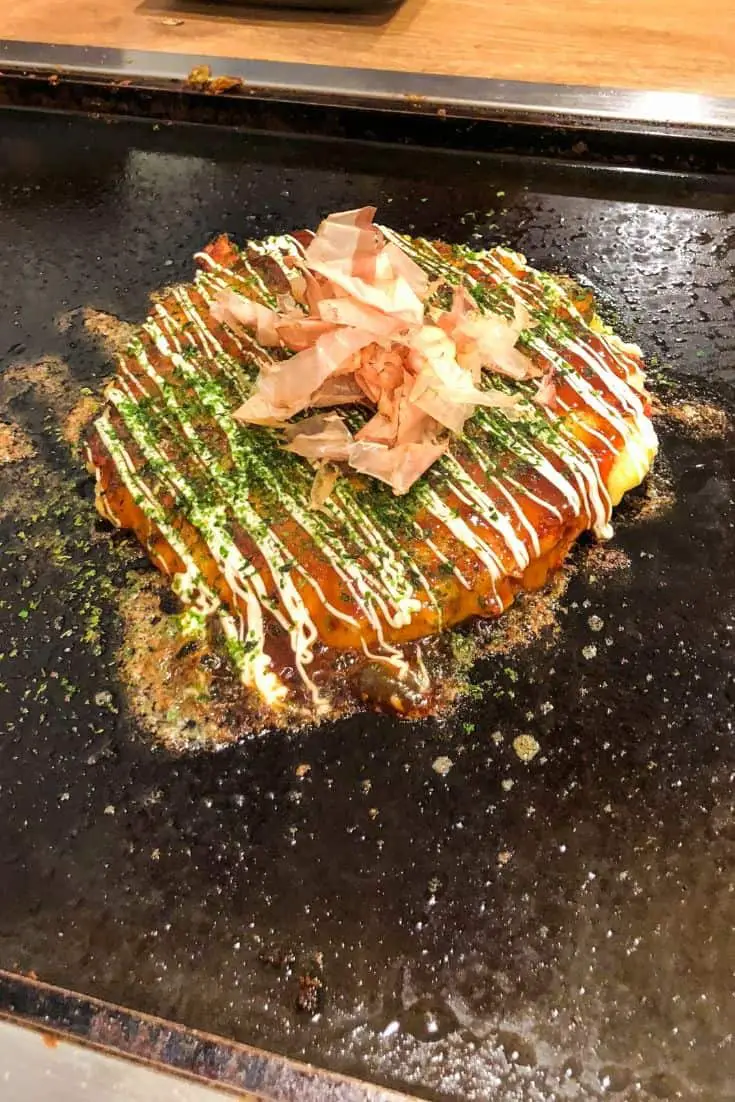Etiquette and table manners when eating Japanese food
Japanese food culture is unique, and it usually confuses a lot of people.
A traditional Japanese meal consists of Gohan (bowl of rice), miso shiru (bowl of miso soup), tsukemono (pickled vegetables), and meat or fish.
Although rice is the staple food of the Japanese, there are various types of noodles which are cheap and offer a better alternative to rice.
Since Japan is an island nation, its people take price in seafood. As a result, Japanese food culture incorporates a variety of squid, fish, eel, octopus, shellfish, and other types of seafood.
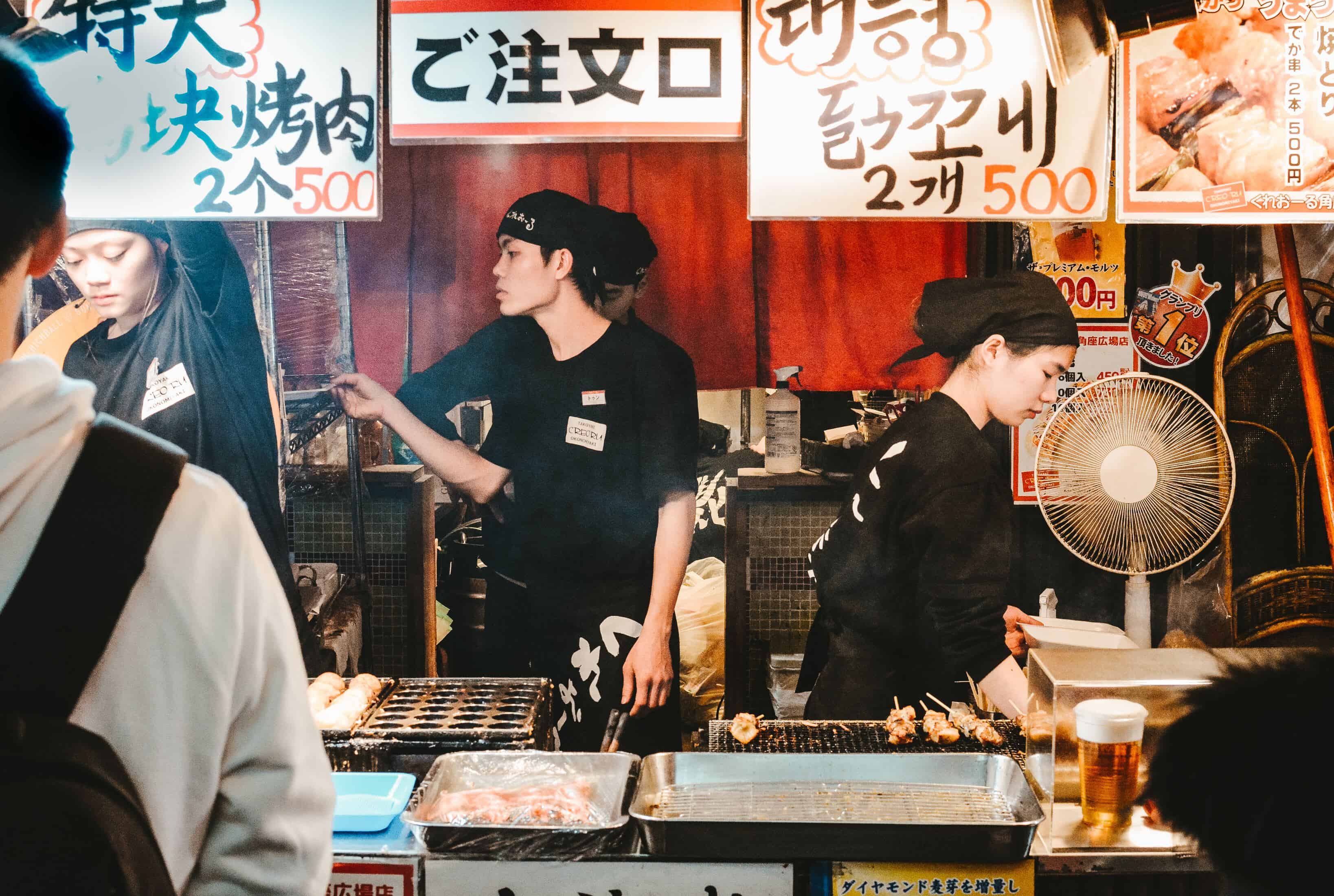
Also, it is essential to note that each Japanese noodle soup restaurant has a unique etiquette, and this applies to the sushi restaurants too.
Every dining experience in Japan is different, and this makes the food culture more enjoyable and exciting, just like the food flavors.
So, the next time you plan visiting japan, make sure that you enroll in a cooking class, as this will assist you to have a better understanding of the Japanese food culture, as well as the art of cooking.
The following are some important things that you need to understand about Japanese food culture.

Check out our new cookbook
Bitemybun's family recipes with complete meal planner and recipe guide.
Try it out for free with Kindle Unlimited:
Read for freeIn this post we'll cover:
- 1 Japanese food culture and etiquette
- 2 The importance of Japanese table manners
- 3 The Japanese chef and his apprentice
- 4 Different Japanese foods and cooking styles
- 5 Different Japanese food recipes
- 6 Bonus recipe:
- 7 Additional questions around Japanese Food you guys asked
- 7.1 Is it rude to finish your plate in Japan?
- 7.2 Do Japanese eat avocado?
- 7.3 Do Japanese burp after meals?
- 7.4 What is a typical Japanese diet?
- 7.5 What kind of food do they eat in Japan?
- 7.6 Is Japanese food healthy?
- 7.7 What do Japanese people have for lunch?
- 7.8 Do the Japanese eat bread?
- 7.9 Do Japanese eat fish everyday?
- 7.10 What is a typical Japanese breakfast?
- 7.11 What do poor Japanese eat?
- 8 Bottom Line
Japanese food culture and etiquette
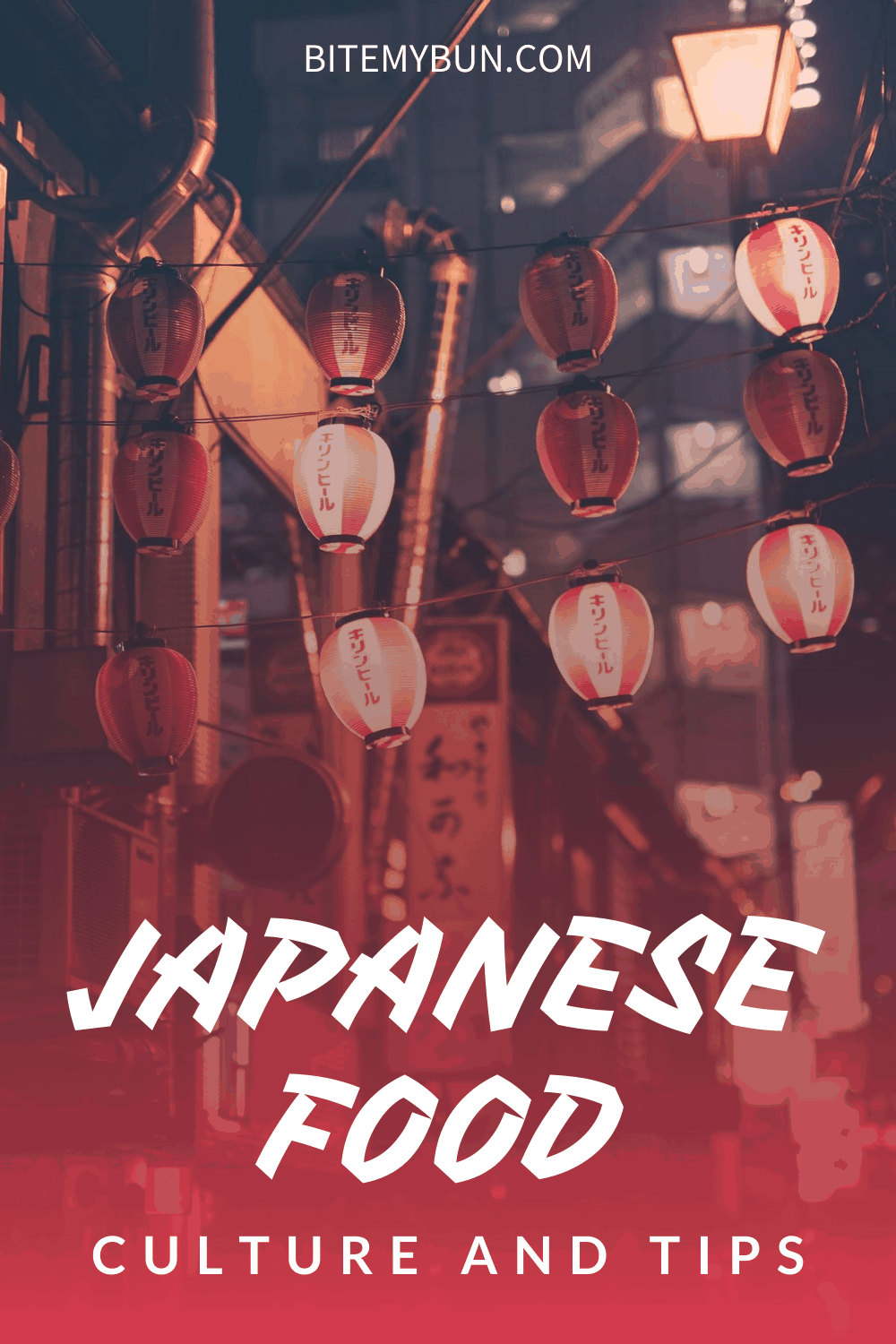
Let’s take a look at the most popular Japanese foods and I also have a tip about their tradition.
How do you eat miso soup?
It’s important to note that miso soup is a common and popular dish served at almost every Japanese restaurant. The soup has a cloudy broth, seaweed, as well as small tofu pieces.
Although many people tend to use a spoon to take their miso soup, it’s always recommendable to sip your miso soup from the bowl.
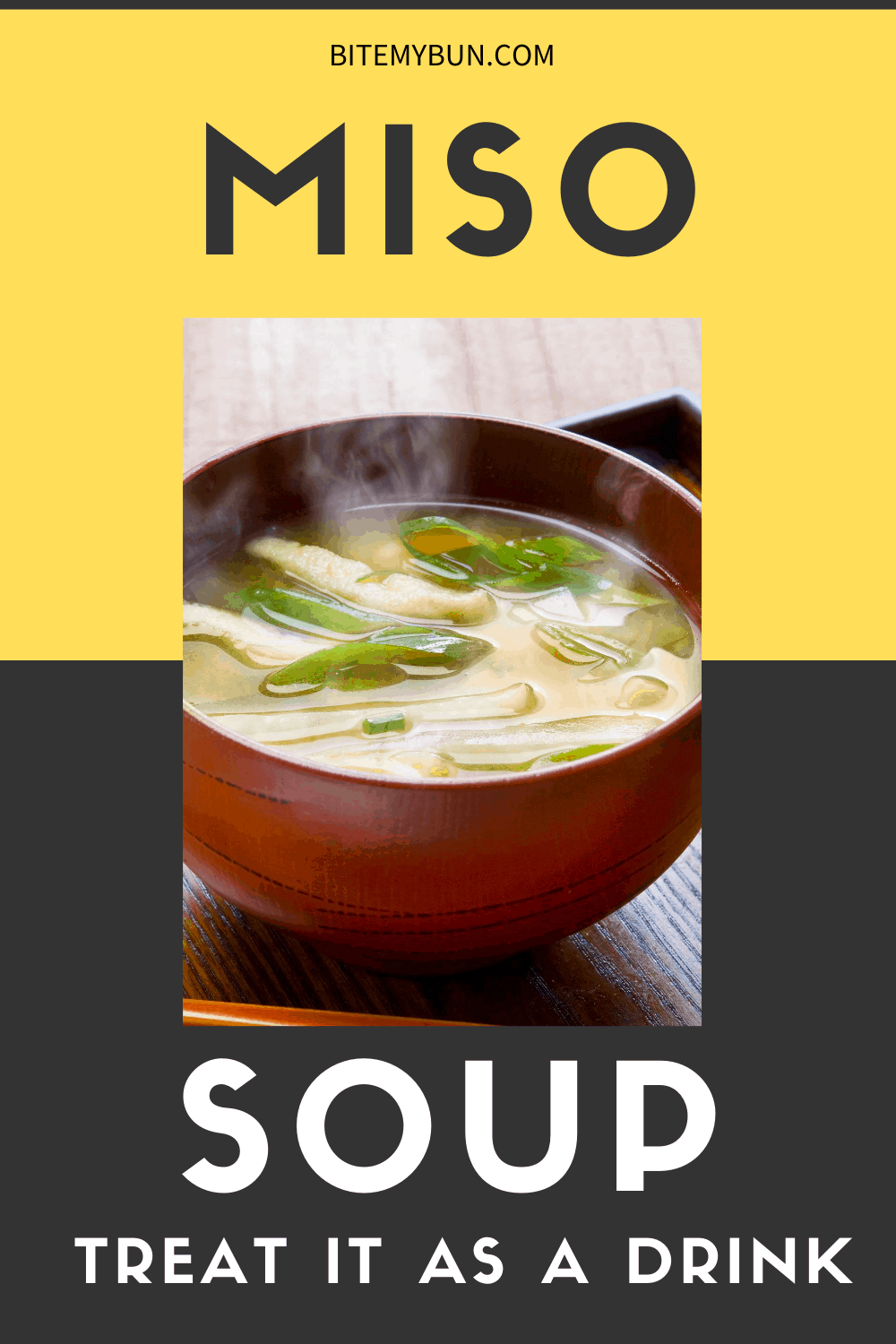
Once the broth is finished, the seaweed and tofu will remain at the bottom of the bowl. You should use chopsticks to eat them.
Do you dip sushi in the soy sauce?
If you have never eaten sushi, please note that the rice has a sticky texture, which is there for a reason.
When you dip the sushi in soy sauce, the rice becomes very soft, thus losing its texture, which is very important.
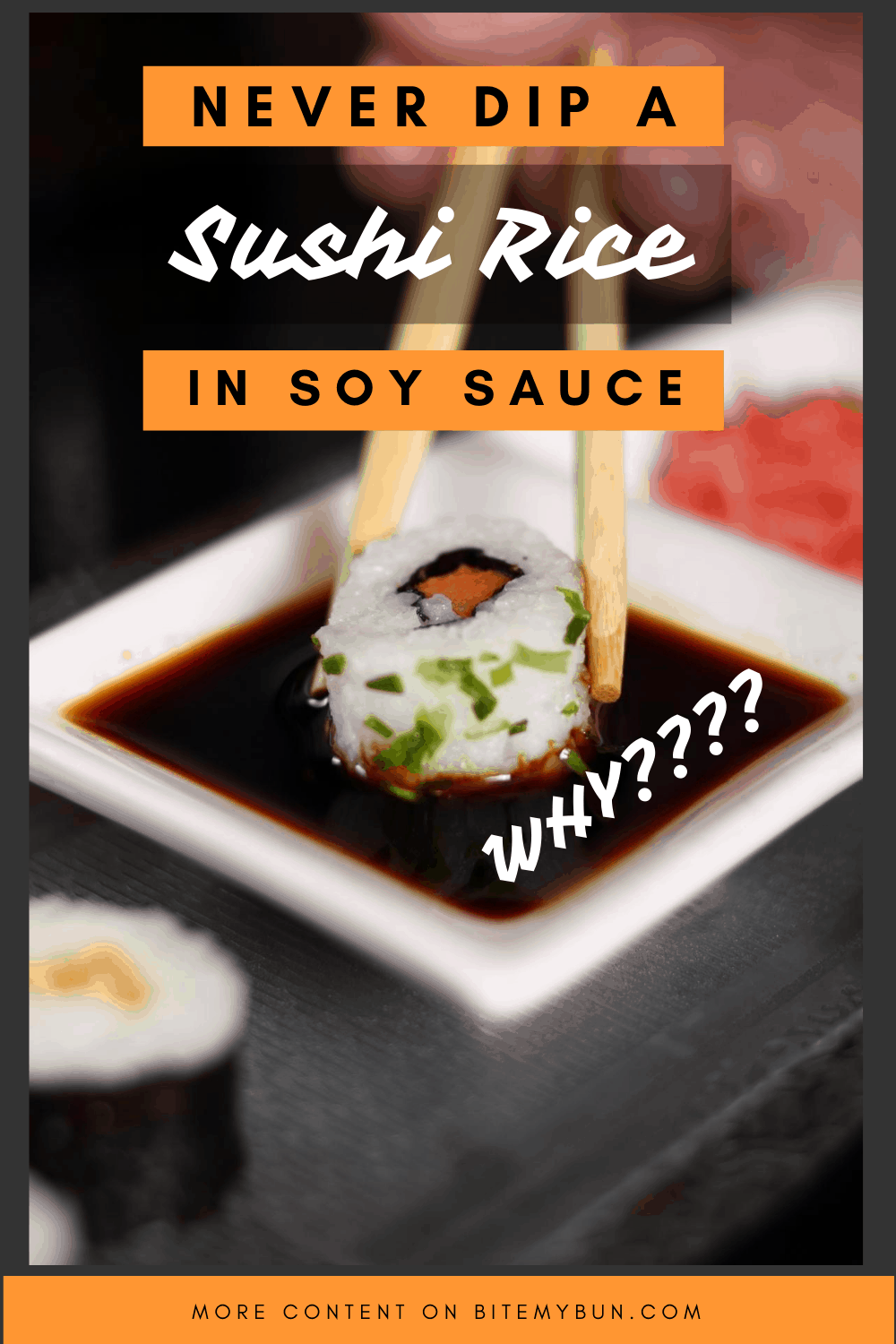
In addition, you should never leave any pieces of rice in your soy sauce dish. In case you need some sauce, make sure that you dip the fish part of the sushi roll, but not the rice.
Also read: the beginner’s guide to getting started in making sushi
Never leave a messy plate, it is rude
Once you are done with your meal, don’t crunch all you napkins and then leave them on the plate you were using. Many Japanese people consider this to be rude behavior and a sign of disrespect to the restaurant staff.
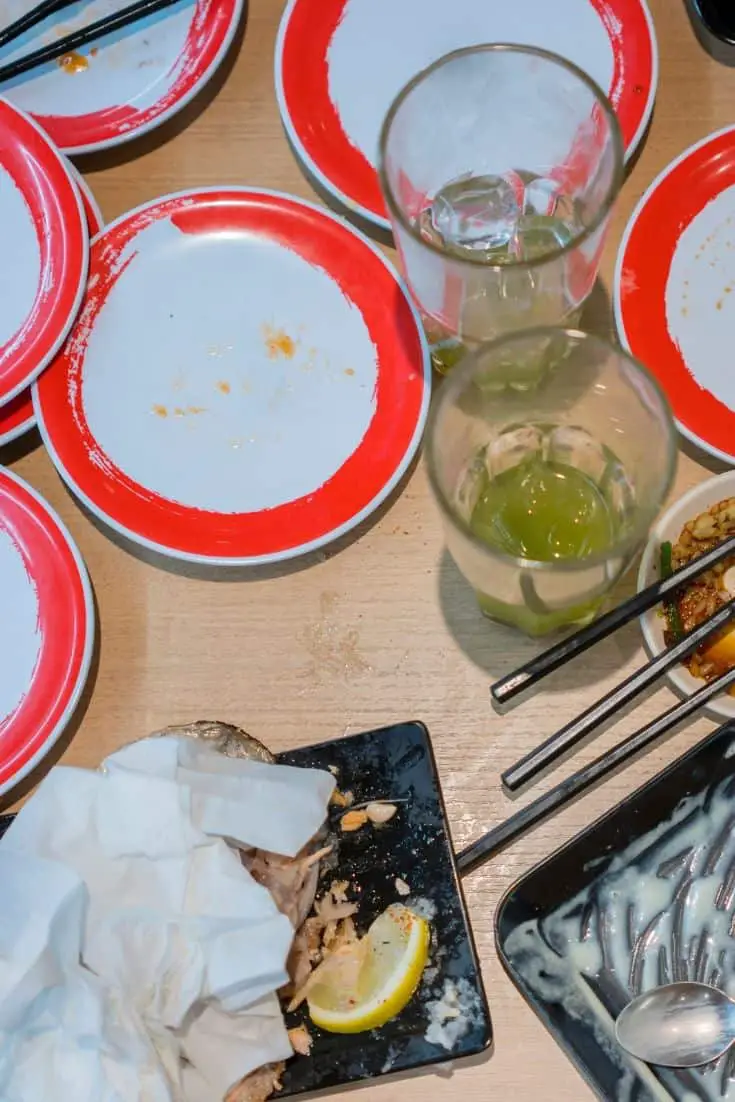
Rather, you are expected to fold the napkins neatly, and then leave them next to your plate, or just dispose of them in case there is a bin at the restaurant.
The importance of Japanese table manners
Whenever you go to a Japanese restaurant, make sure that you observe table manners. Never stick the chopsticks straight up in your rice bowl, or even place them across the bowl of noodles.
Always, make sure that you make use of the chopstick holder, which is mostly available at every table.
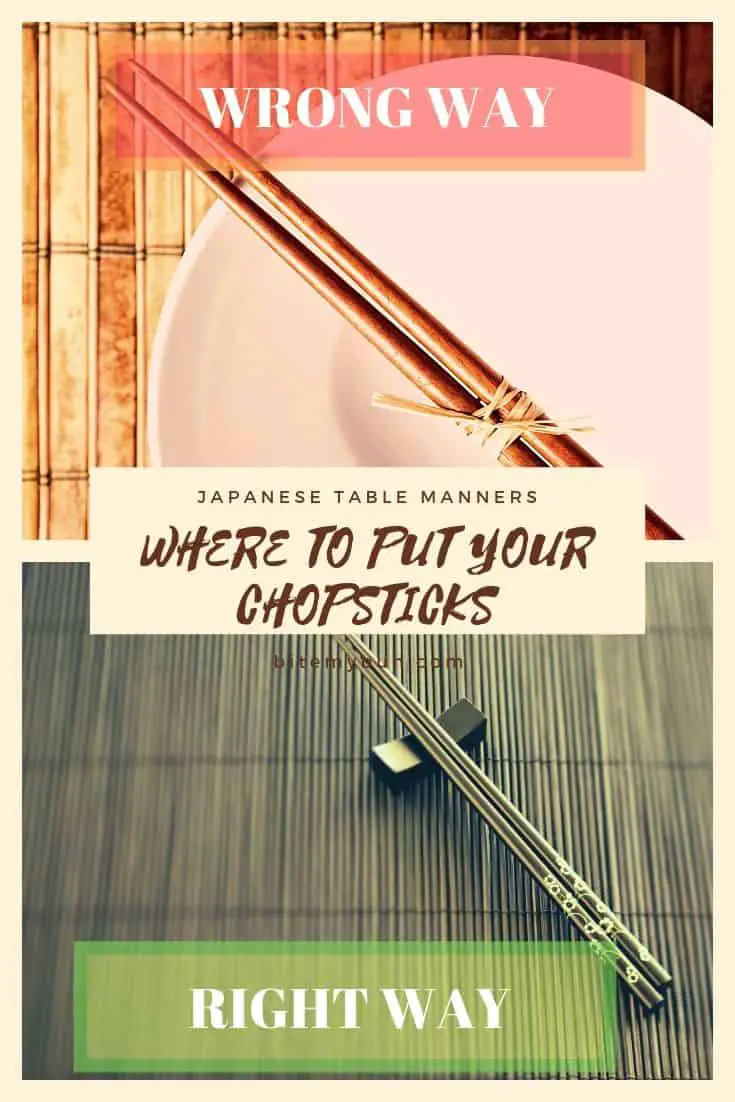
If there is no holder on your table, it’s advisable to fold your napkin into an upright triangle, and then place your chopsticks on that napkin.
Should you tip the staff in a Japanese restaurant?
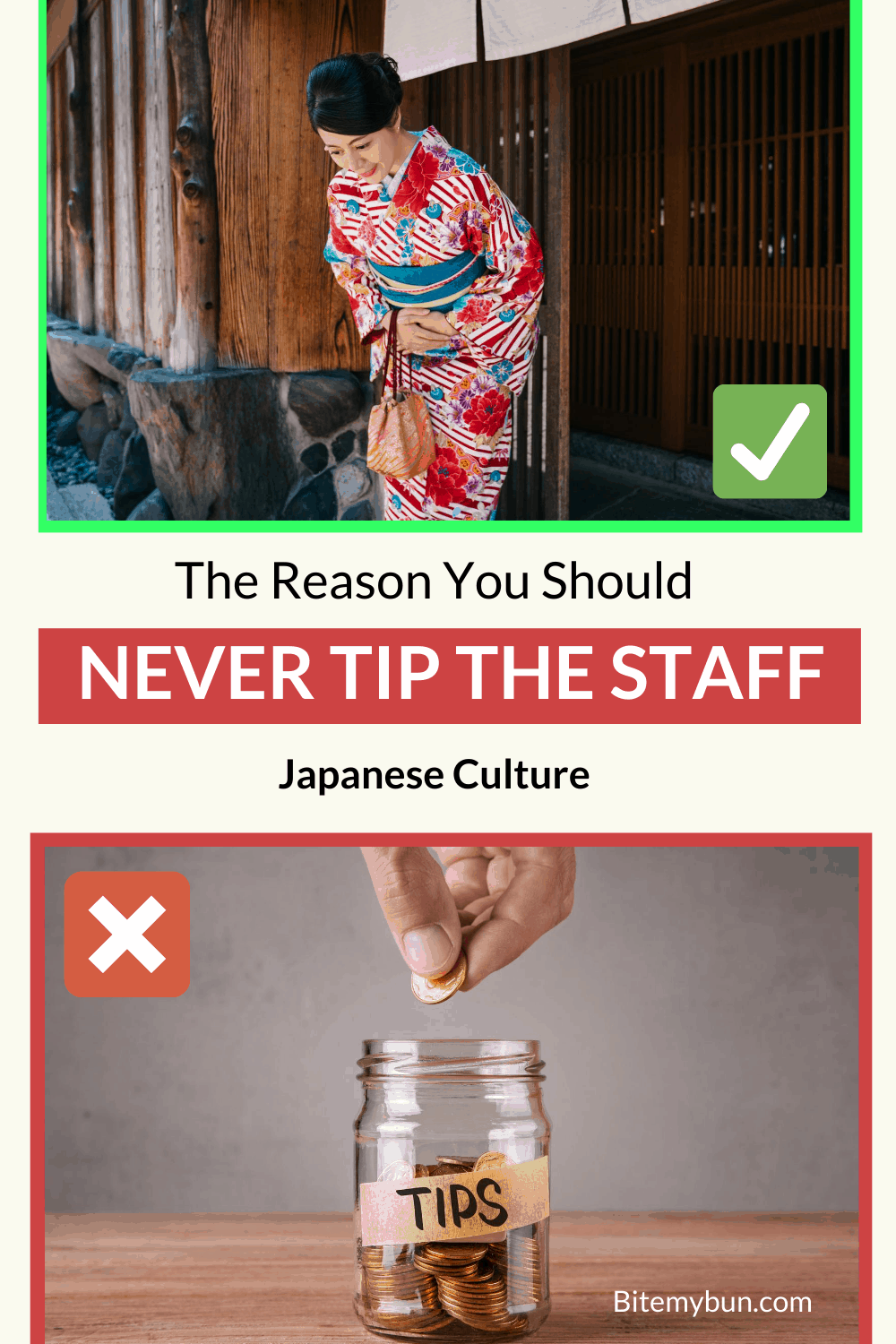
Although this is a common practice in Western countries, it is not recommended in Japanese restaurants, as it is considered to be rude.
The staff in most of the Japanese restaurants are well trained and highly paid. Thus, tipping the seasoned sushi chefs makes them feel degraded.
The Japanese chef and his apprentice
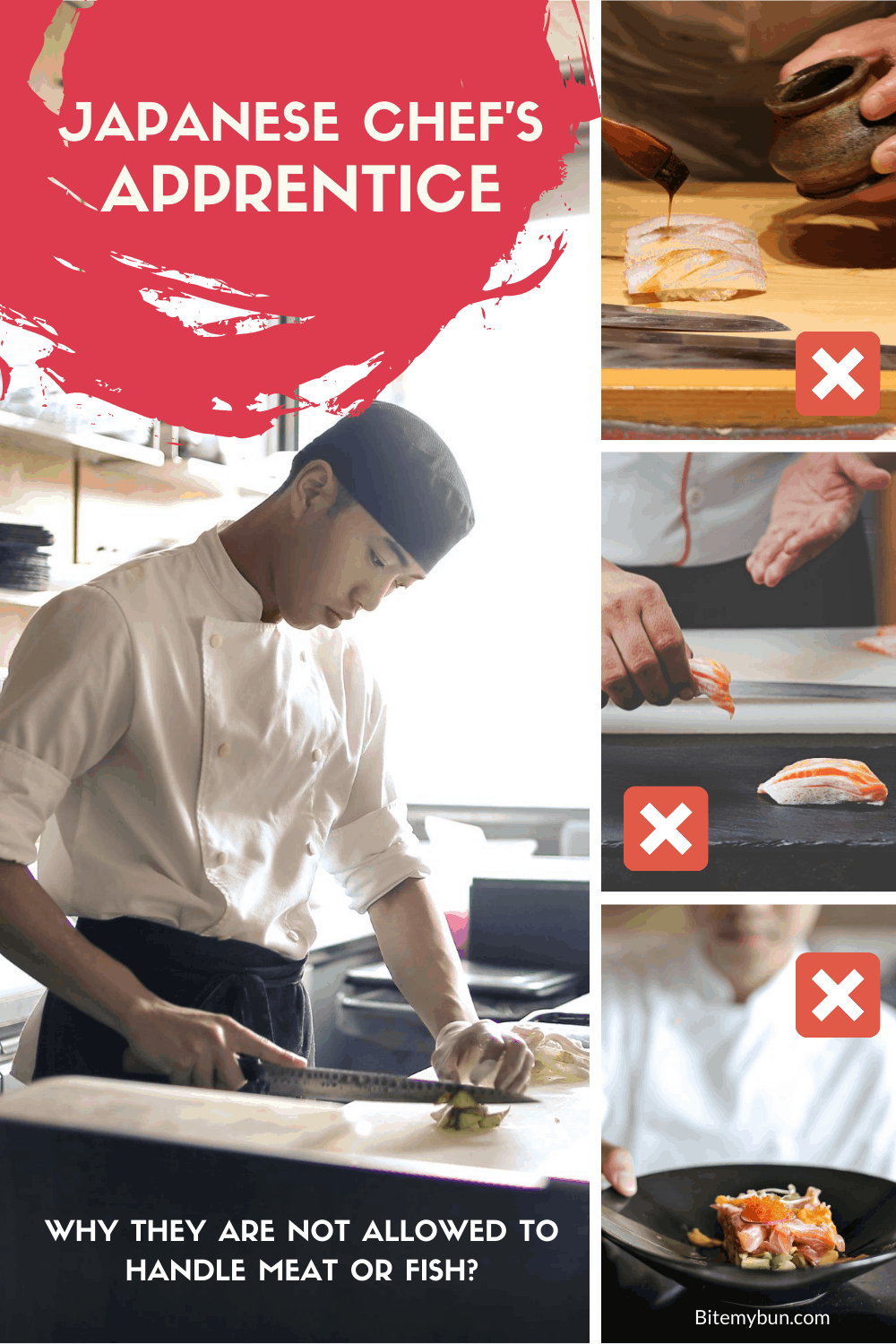
Traditional Japanese restaurants are operated by the chef, together with his apprentice.
As a tradition, trainee chefs are never allowed to handle the meat or fish for several years, until they become experts.
The head chef in a traditional Japanese restaurant is responsible for creating the meals, while the apprentice does other hobs like preparation, serving tables, and cleaning.
A true traditional Japanese restaurant doesn’t have a single serving staff as the apprentice are responsible for these tasks.
CNN even did an expose on the topic, the life of a Japanese sushi apprentice is not glamorous:
Every dish has its own significance
As a part of the food culture, every Japanese dish has its own significance, just like the food in these dishes. The chefs are keen to choose the right patterns and colors of forevery meal they want to prepare.
Bowls and plates are mostly seasonal, hand-painted, and each has an important history. It’s important to understand that the apprentice and chef usually expert diners to ask about these dishes before they start eating.
Different Japanese foods and cooking styles
Sushi and sashimi
This is one of the most famous Japanese food that everyone can associate with. Sushi is a popular dish in every part of the world, and it is unique in terms of its creation.
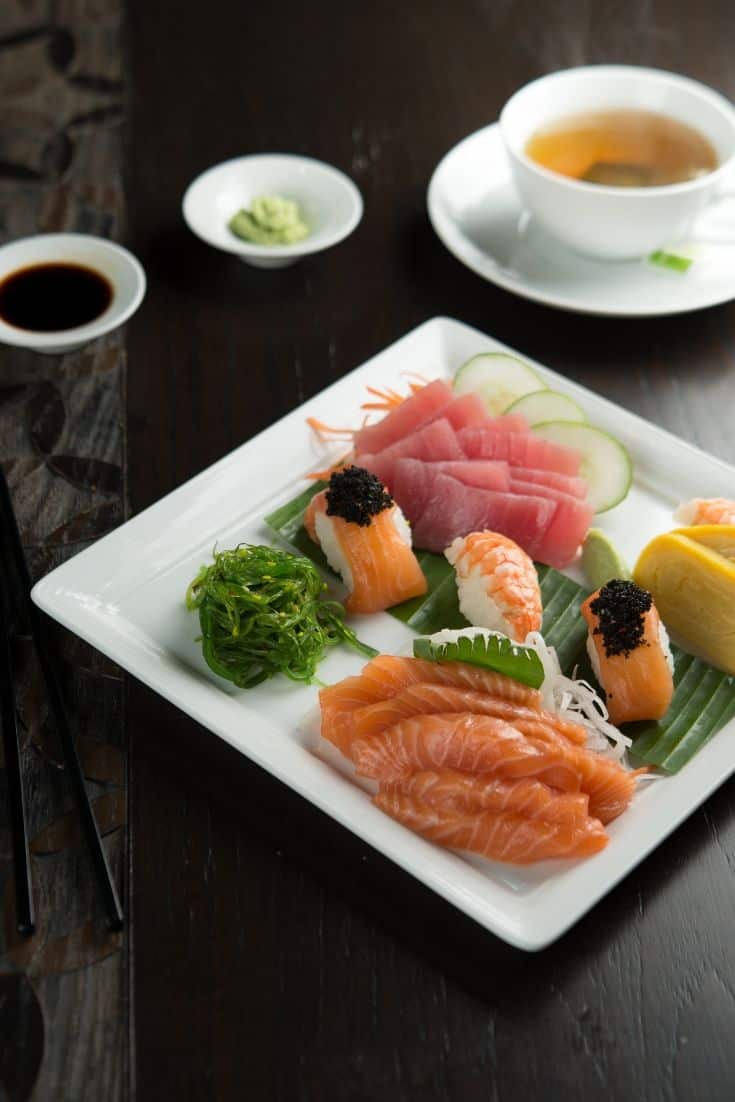
The main reason behind this is because each piece of rice is first seasoned with rice vinegar, and then mixed with other ingredients like different seafood, nori or seaweed, veggies, and others.
What you need to do is just to pick a piece of sushi using chopsticks, and then dip it into wasabi or soy sauce, or both. This will give you a true mixture of flavors.
Sushi comes in different names, but this depends on the ingredients used. Some of these names include Maki sushi, Nigiri sushi, Temaki Sushi, and Oshi sushi, among other names.
Sashimi, on the other hand, is basically seafood or raw fish served with soy sauce and wasabi—which is a spicy Japanese condiment. This dish is mostly served with a side dish of radish slices. Its name is derived from the tail of a fish that is used to make this delicacy.
Ramen
When you visit Japan, you will realize that ramen is one of the most common options you will have available when choosing a meal to eat.
The food consists of a bowl of noodles, which is served alongside miso soup or soy sauce mixed with a variety of other ingredients. The most common ingredients include green onions, slices of pork, egg, and seaweed.
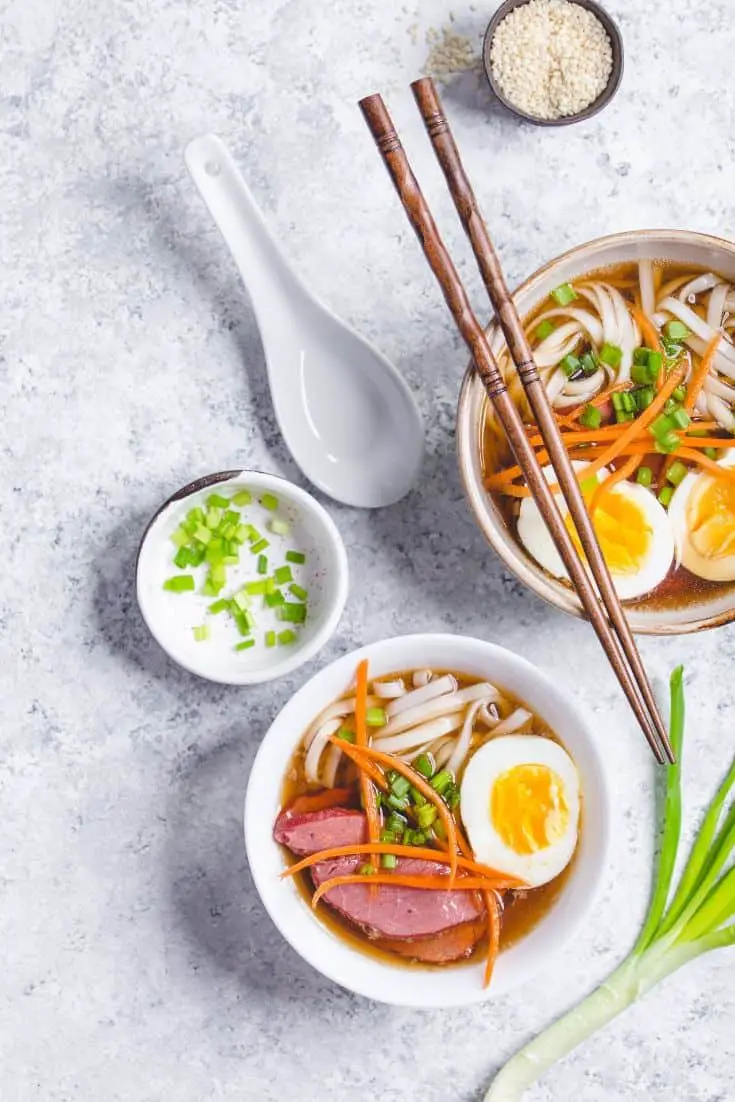
The flavor of the dish cannot be compared with any other food since it’s very special. The most interesting and special part of the dish is the miso soup.
This is the most flavorful Japanese soup that you will ever taste, and ranges from strong to soft, depending on the restaurant where you order your soup.
The pork is cooked in a manner that makes it so soft, to the extent that it can start to break the moment you hold it with chopsticks.
For a complete meal, you need to order ramen, and a side dish of rice, which will leave you satisfied as soon as you finish the meal—only if you can.
Tempura
This is Japanese fried food, which is mostly made out of veggies and seafood. However, you can also find tempura made out fish and fowl and then seasoned with a sauce made with sugar, soy sauce, and ginger.

This meal can be made using almost any vegetable available. The size of this snack should be eaten with only one bite, despite the fact that it’s deep-fried, and lacks the oily texture needed.
Mostly, tempura is served alongside tetsuyu, which is a mixture of sweet sake, consommé, soy sauce, spices, radish, and ginger.
Read more: learn how to make these delicious Japanese dipping sauces
Kare-Raisu (curry rice)
This is a very simple, delicious, and popular Japanese dish, which is served in almost every Japanese restaurant.
Kare-Raisu is rice with curry, but it has a completely different taste from other curry dishes you will ever taste. You will need to use different veggies and meats to make Japanese curry.
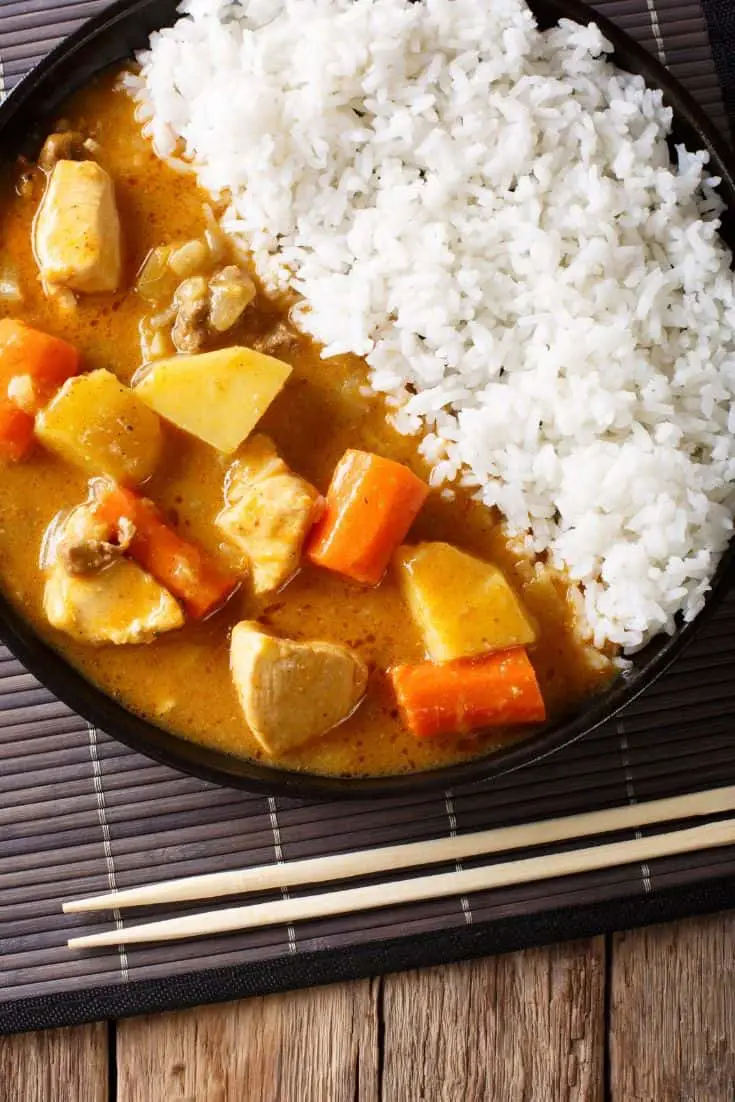
The basic veggies include carrots, onions, and sweet potatoes, and you can use chicken, beef, pork, and duck for the meats. In addition to this, the curry has different levels of spiciness, which include regular, soft, and hot.
However, the hotness level of the curry will depend on the level that you choose.
The Curry Kingdom is one of the best and famous curry shops in Tokyo, Japan. The shop has one of the widest varieties of curry for you to choose from.
This includes chicken curry, fish curry, pork curry, and even fruit curries like the strawberry curry.
Also read: the best brown and sushi rice steamers
Okonomiyaki
This resembles pancakes, especially with the way it’s pressed on the grill, but the ingredients used are completely different, and it is also considered to be a savory dish.
Typically, okonomiyaki is made with egg, yam, and flour, and you have the freedom to add anything you want—if you wish to make it more interesting.
Some of the common additions to this dish include beef, onions, squid, shrimp, cheese, vegetables, and mocha.
In some Japanese restaurants, the chef makes the okonomiyaki experience more interesting and interactive since they prepare the meal before the customers, as they assist the chef to add the extra ingredients.
Shabu Shabu
This is basically a Japanese Hot Pot dish. The most interesting thing about this dish is that it uses different kinds of seafood and meats, especially the softer meats, as well as sides of veggies, noodles, and tofu.
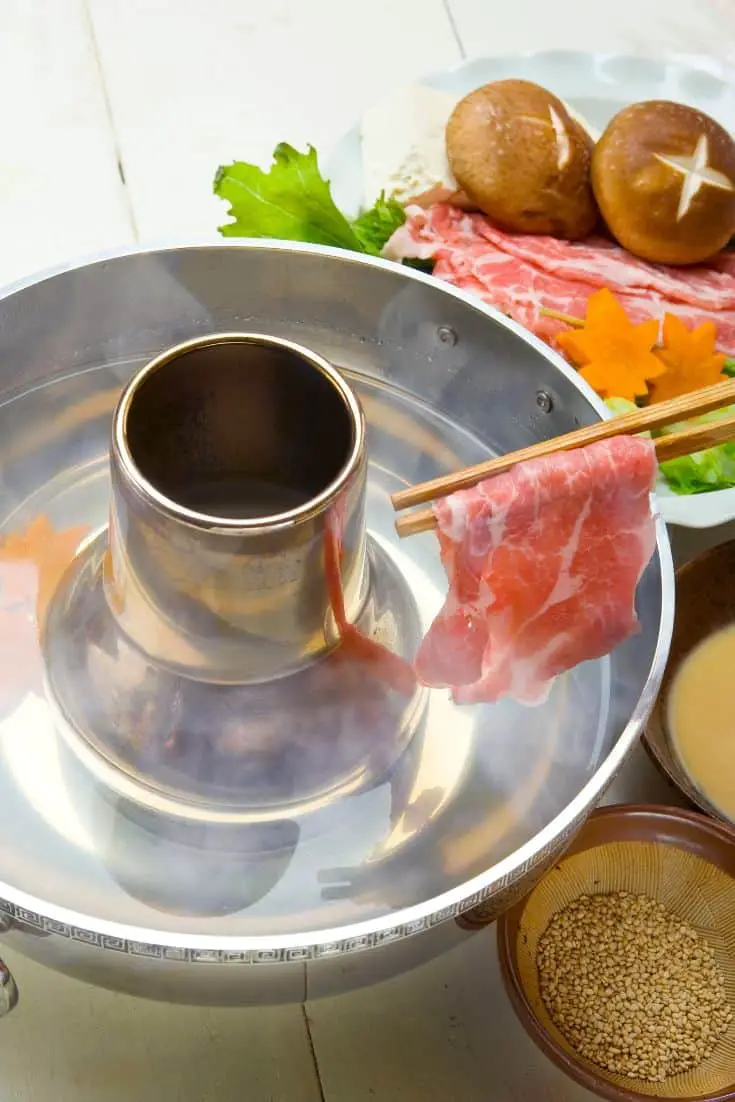
The way shabu shabu works is that you take a piece of meat, and you can also pick some veggies, and then dip it in a pot of hot water or consommé.
Once the meat is cooked, you can dip it in sesame sauce, with a side dish of rice. This is a delicious and irresistible meal.
Yakitori
This is a Japanese rotisserie, also known as skewers. Traditionally, chicken meat was used to make yakitori, and this explains the name “tori” in the word “yakitori,” which means “a bird.”
However, today, you can use pork, fish, and beef to make yakitori. These skewers/brochettes are a mixture of meat and vegetables, which are cooked on a grill, and then dipped in a sauce (teriyaki).
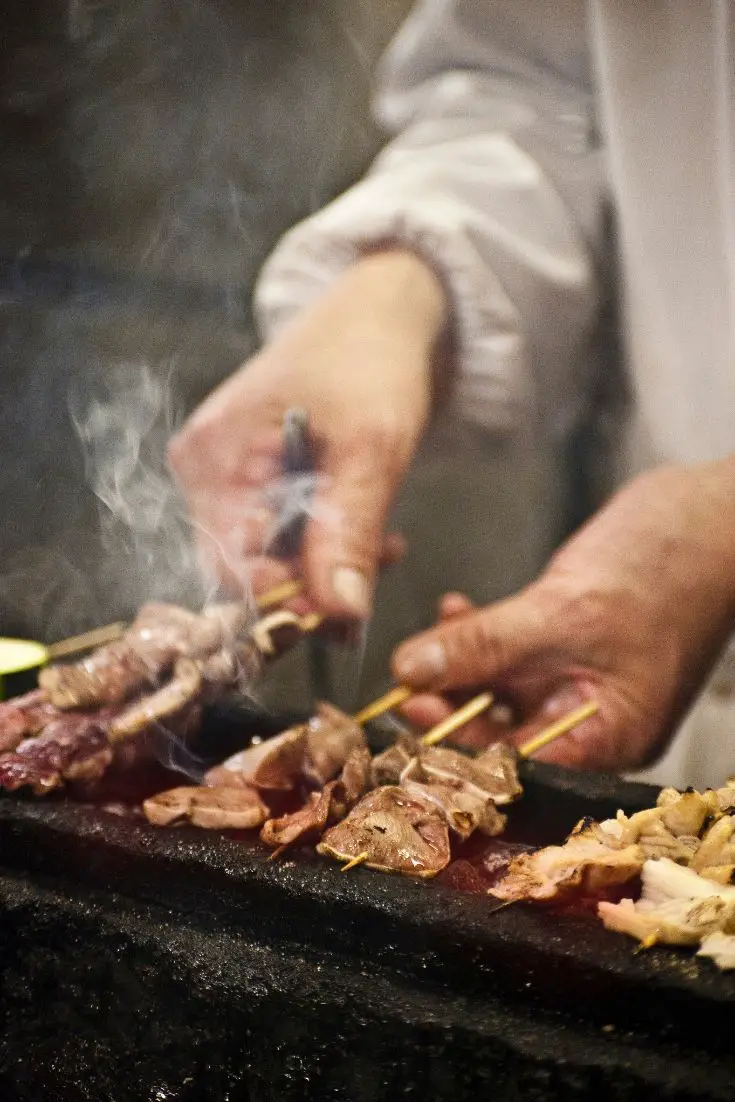
Yakitori is a typical Japanese fast food dish, as a dish that is best eaten with alcohol.
Yakitori is considered to be a common option for foreigners since most of them are comfortable in trying it out.
The dish has an occidental flavor—so, if you are not so sure about the dish you want to taste first, or you don’t like Japanese flavors, then yakitori is the best Japanese dish to start with.
This will give you a good introduction to the Japanese cuisine, and assist you to familiarize yourself with Japanese dishes.
Onigiri
Onigiri is one of the most popular and common Japanese snacks. No matter the time, or your location, you can grab an onigiri so if you are hungry, and you don’t have the time to prepare a meal.
This Japanese snack comprises of rice balls, which are seasoned in various ways. Some of these rice balls are stuffed with pork, fish, and chicken, while others are covered with a slice of egg or seaweed.
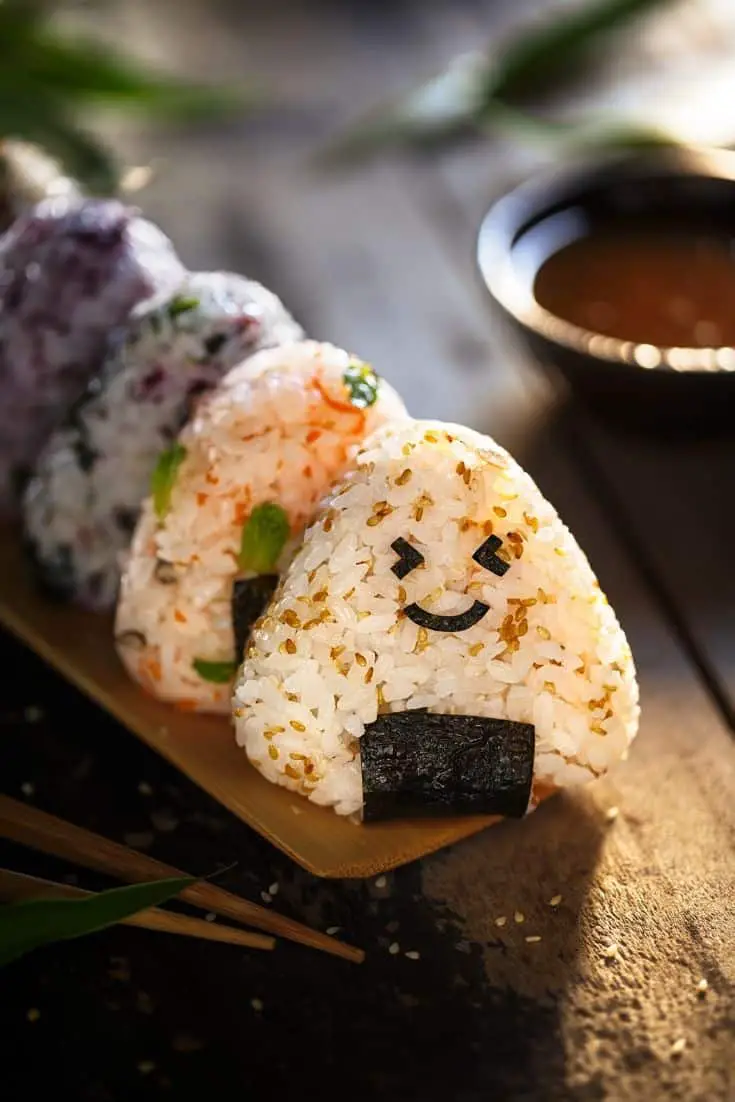
Others consist of rice, which is mixed with veggies, some sauce, furikake, and veggies.
Well, not it’s evident that there are a different variety of flavors that you can choose from, and that’s one of the reasons why this snack is very popular in Japan.
There are various shops that make this Japanese snack, but you can also grab one of these snacks from a supermarket or convenience store.
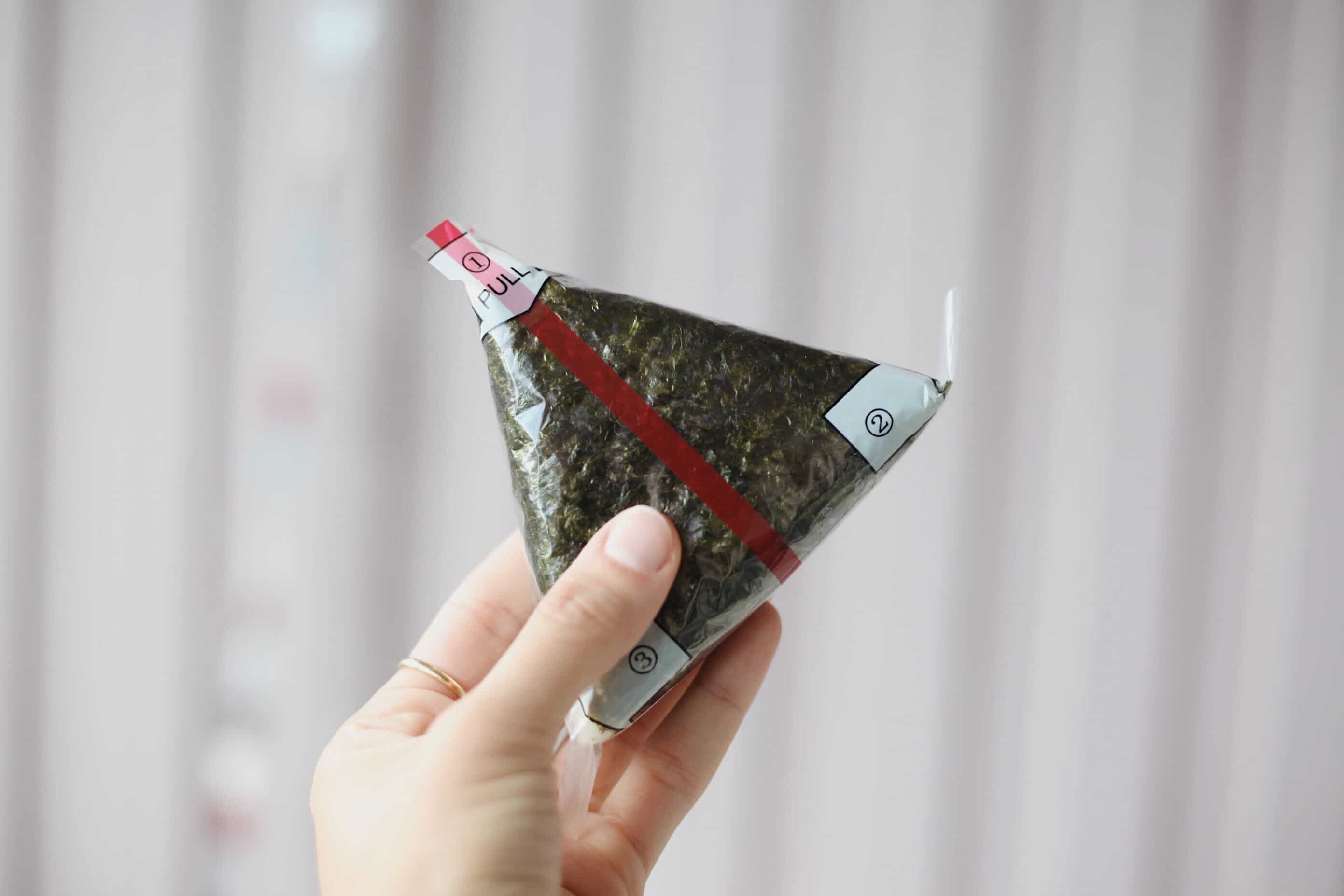
Udon
These are thick Japanese noodles made out of wheat flour. They are mostly served with mirin and soy sauce in a consommé.
Some restaurants also add negi (onion) when serving udon noodles. The size and shape of these noodles depend on the area where they come from. You can eat the noodles hot or cold.
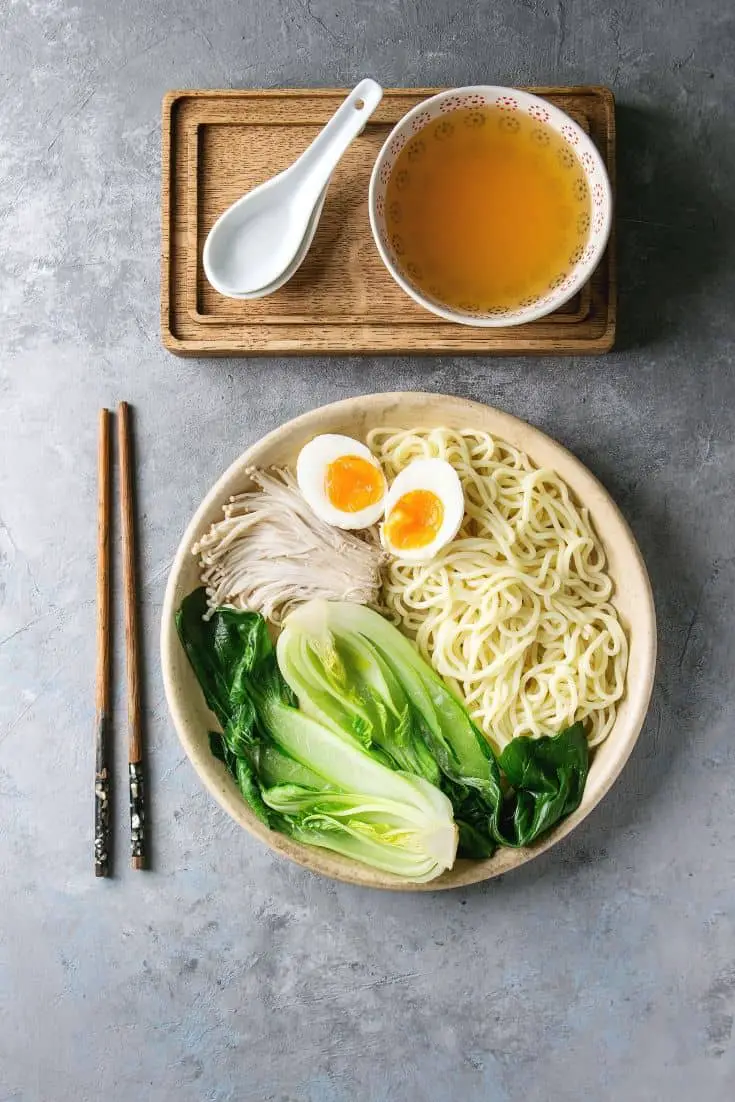
Udon noodles are very common and popular in Japan, and they are mostly eaten by workers and students who need something fast to eat for lunch. When you visit Japan, you will notice that there is udon stand in almost every corner, and they are always crowded. But, you shouldn’t be worried since you won’t take a lot of time in the queue.
Gyudon
This is a bowl of rice with beef, and it is seasoned with various spices and ingredients on the top.
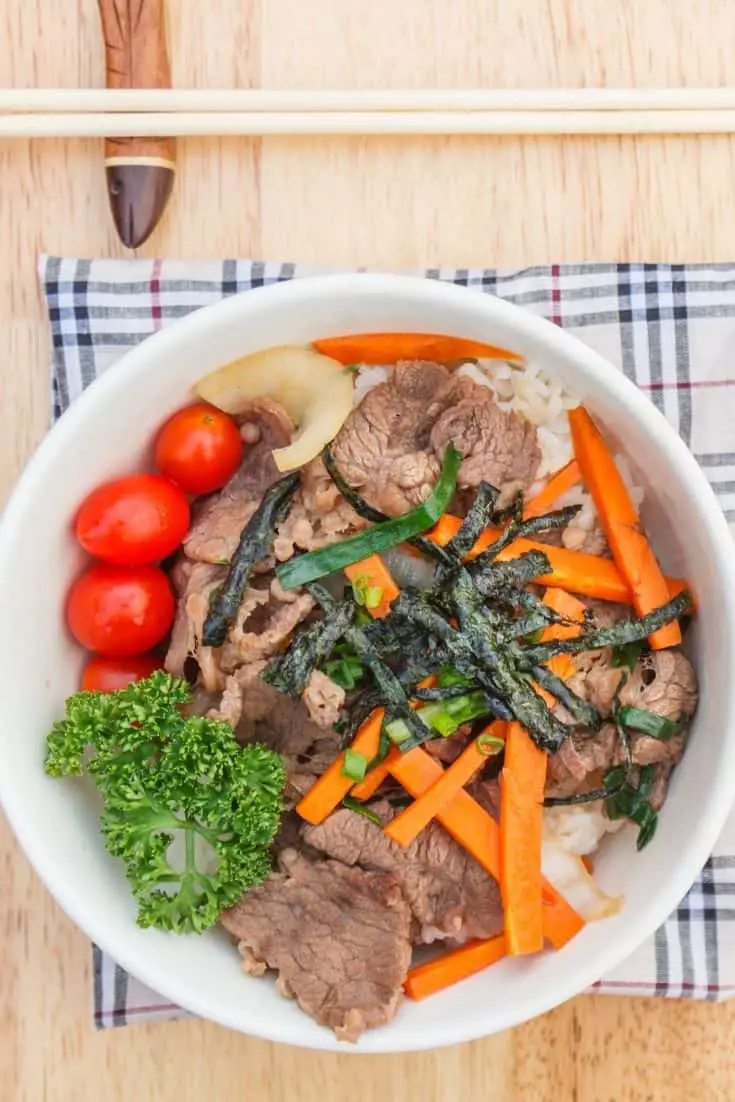
Sukiya is one of the most famous locations in Japan where you can enjoy this delicacy. Although most people consider Gyudon to be a simple and inexpensive dish, it is very delicious.
When you order a Gydon in some places, it comes as a set, accompanied by miso soup and a small salad. But one thing most people love about this dish is that it is served very fast.
Generally, when you order this dish, it prepared and served within 5 minutes. Also, the size of this dish depends, as you can easily get a small-sized, medium-sized, and large-sized Gyudon, depending on your preference.
Moreover, this is a meal that you can have for your lunch since it doesn’t take much time to prepare.
Gyoza
These are popular Japanese potstickers or dumplings that come in three types:
- Suigyoza (boiled)
- Yakigyoza (fried)
- and Agegyoza (deep-fried)
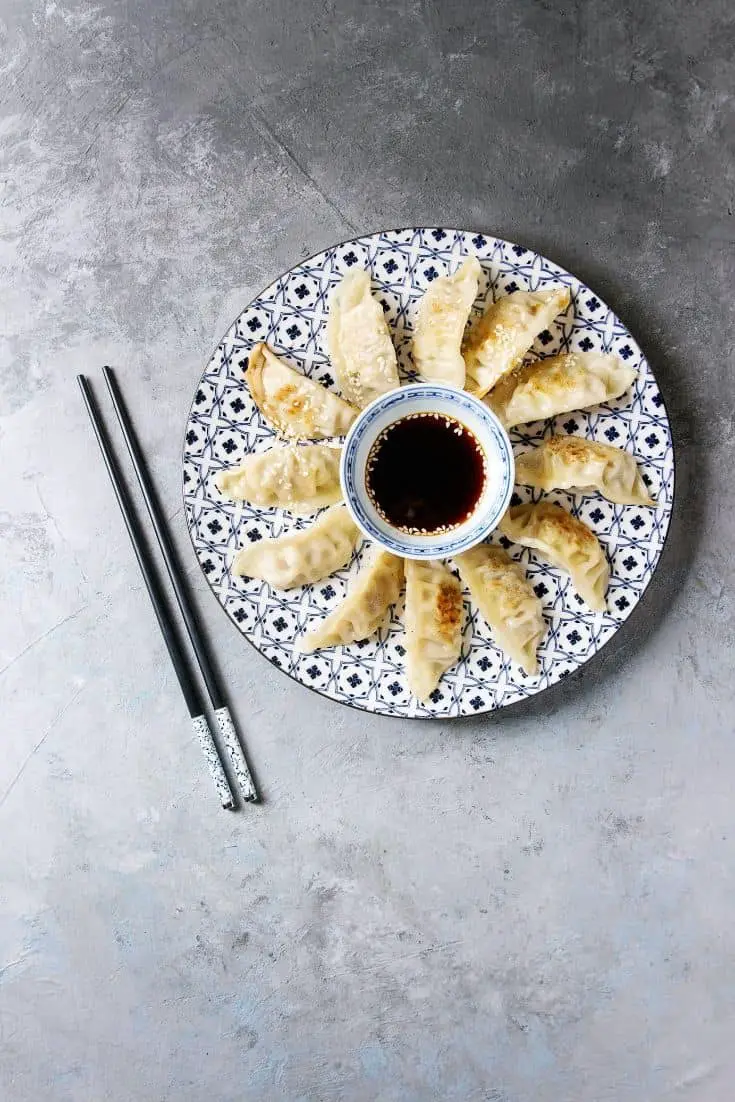
The fillings inside include things like mushrooms, cabbage (thin slices), chives, as well as finely minced chicken or pork.
Japanese gyoza is usually made using thin wrappers, unlike the Chinese version of gyoza, which is made with a doughier and thicker wrapping.
When you order for gyoza, it is served alongside dipping sauces, which include vinegar, soy sauce, sesame oil, ponzu sauce, or chili oil.
When you visit Japan, you should try gyoza, especially from the Utsunomiya, a city that is popular for gyoza consumption.
In addition to all these dishes, it is important to understand that most Japanese foods are served alongside Japanese green tea.
You should never leave your table without taking the tea since it is a sign of appreciation, and it also shows that you respect the Japanese food culture.
The Japanese love green tea and even have this Ochazuke green tea rice bowl!
Different Japanese food recipes
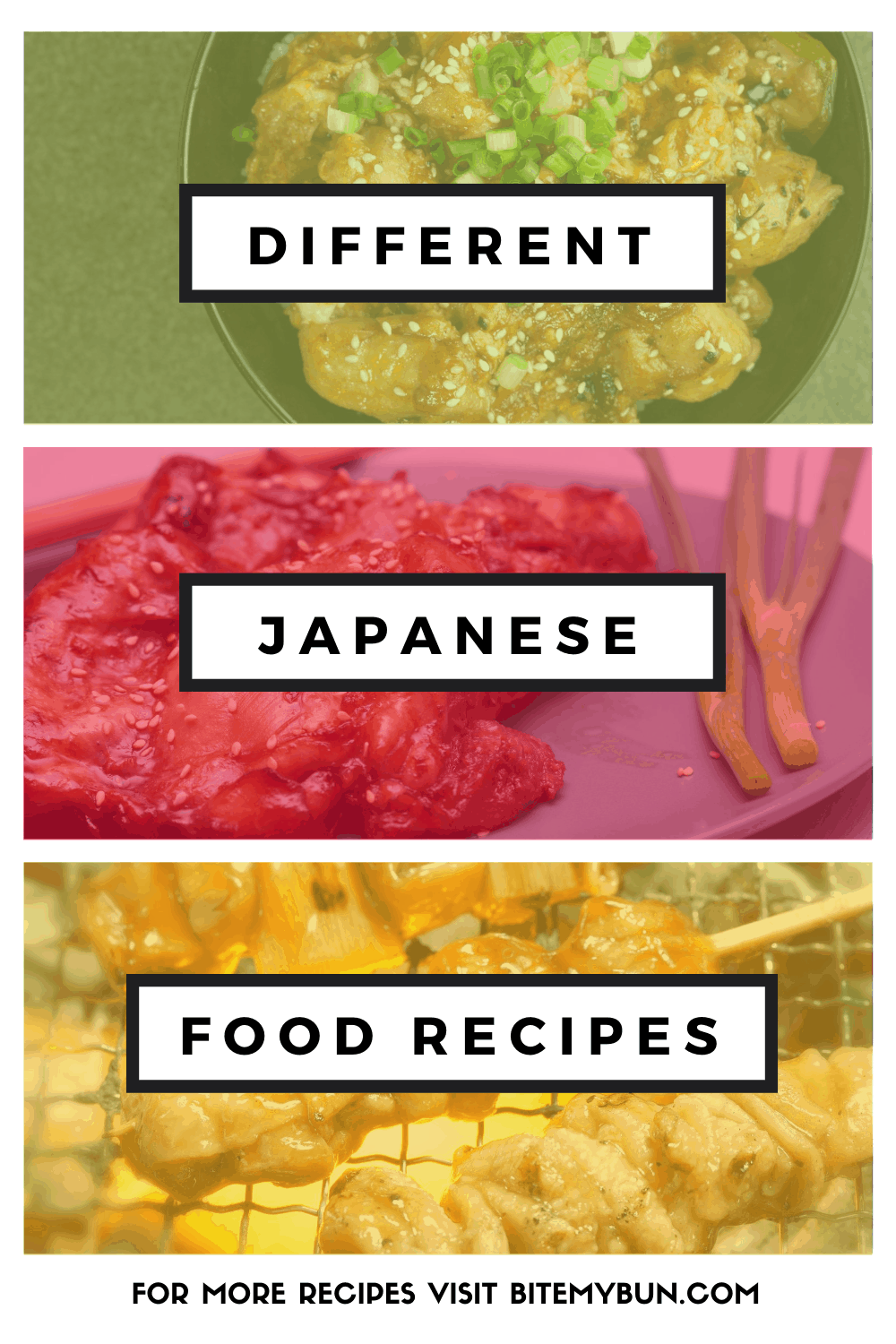
Oyakodon (chicken and egg bowl)
Oyakodon is classic Japanese soul food, with a literal translation of parent-and-child rice bowl. The chicken is the parent, and the egg is the child.
This Japanese dish is cooked in a single pan, where chicken, onions, and egg are simmered in a pan with an umami-rich, dashi-based sauce. The food is then poured into a bowl of fluffy steamed rice.
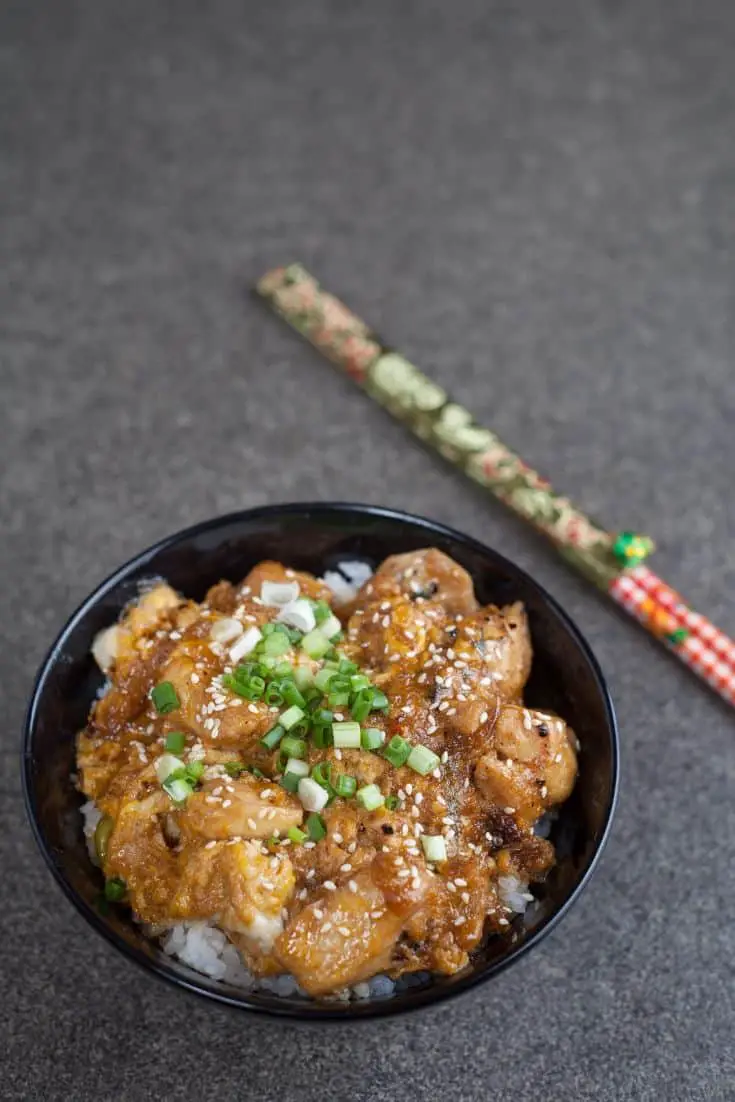
Oyakodon is a simple, delicious, and totally comforting meal that you can prepare within 30 minutes.
This is a typical dish in many Japanese restaurants, and you can also make one at home. Just like its name means, everything about this meal brings forth warmth and comfort.
Here are some reasons why you need to make this delicacy at home:
- This is a one-pan—bowl meal – if you are searching for a simple meal to prepare when tired, then oyakodon is the ideal meal for you. This one-pan—bow dish means you use fewer utensils, which translates to an easy cleanup after the meal.
- A quick and simple meal to prepare – you can easily clean these dishes within the least time possible and with less effort. In case you have teenagers in your home, then this is one of the easiest meals that they can learn how to prepare. In addition, you won’t have to worry about the mess that’s left behind after cooking since they will only use two things—a pan and a bowl. Moreover, this can be a survival meal for your kids that can prove useful the moment they go to college.
- It is a healthy meal – you don’t need oil to prepare this meal. In addition, you always use fresh ingredients, which makes this Japanese delicacy healthier. You only need to summer the chicken and onions in soy sauce and dashi based sauce.
- You have all the required ingredients at your home – as highlighted earlier, oyakodon has a simple recipe that requires three ingredients—onion, egg, and chicken, which are readily available in almost every home. This means you don’t have to go through all the hassle of searching for the ingredients.
- For the dashi sauce, you can make it in large quantities and then keep in your fridge for up to seven days. This sauce won’t take much of your time to make. This means making a large portion of the sauce allows you to enjoy various oyakodon meals with it.
- It is a satisfying meal that you can make from the comfort of your home – have you ever thought of enjoying tender chicken and soft egg over a fluffy bowl of rice? If so, then oyakodon is the meal that will allow you to enjoy all this at the comfort of your home. The rice will absorb the dashi sauce, which makes every bite sweet, salty, and savory. This will be a delicious, belly-filling meal that you will enjoy with no hassle.
So, how do you make oyakodon?
This is a simple recipe that you can prepare within 30 minutes.
Ingredients:
- Skinless, boneless chicken thighs – 2
- Onion – ½
- Eggs – 2 (large)
Seasonings
You can prepare it in ample amount, but you don’t have to use all the seasoning at once.
- Dashi – 2/3 cup
- Mirin – 1 ½ tablespoon
- Sake – 1 ½ tablespoon
- Soy sauce – 1 ½ tablespoon
- Sugar – 1 ½ tablespoon
You will serve this dish with
- 3 cups of cooked short-grain rice (Japanese)
- Mitsuba (Japanese parsley) – small bunch. You can also use scallion or green onion
- Shichimi Togarashi (Japanese seven-spice)
Directions
- First, you need to gather all your ingredients together. Then, combine your sake, mirin, dashi, and soy sauce in one bowl.
- Next, add some sugar, and then mix well until the sugar has dissolved.
- Slice the onion into thin slices, and then chop the green onion. Once done, beat one egg in a bowl, and preserve the other egg for the next batch.
- Now, slice the chicken thigh diagonally, and then cut it into pieces of 1.5” or 4 cm. You can use sogigiri cutting method, which will allow you to cut the chicken into pieces of equal thickness, and also give you extra surface area for faster cooking.
- You can prepare one serving at a time if you are using a small pan. If that’s the case, divide your ingredients in half, for the first batch and then pour it into your pan. You will require enough sauce to cover the chicken and onion.
- Now, add half of your chicken on top of the onion, and then make sure that the chicken and onion are well distributed. Turn on the heat, and set it at medium, and then allow the ingredients to boil.
- Once they boil, reduce the heat to medium-low heat, and then skim off any scum or foam in case it forms. Now, cover the pan and allow it to cook for around 5 minutes or until the chicken changes its pink color.
- Next, drizzle the beaten egg slowly and evenly over the onion and chicken. Cover the pan and cook over medium-low heat until the egg is cooked to your liking. Mostly, this meal is served in japan when the egg is almost set but runny.
- Add the green onion or mistuba immediately you remove the food from the heat. Now, pour the food on top of steamed rice, and then drizzle the desired amount of the remaining sauce.
Yakitori recipe—chicken and scallion
Make sure that you marinate your chicken in a sweet, savory sauce—you will make them hard to resist. This yakitori recipe is simple, and it is great for outdoor grilling. Before you start to grill, make sure that you soak the skewers in water for at least half an hour. This allows the bamboo to absorb water, which prevents the skewers from burning quickly.
In addition to this, use an aluminum foil to cover the exposed ends of these skewers, especially when you don’t have the time to soak them or in case you are using thin skewers.
Ingredients:
- Boneless and skinless chicken thighs – 1 lb. (at room temperature)
- Green onions/scallions – 9
- Neutral flavor oil (vegetable, canola, etc.)
- Yakitori Sauce (Tare):
- Soy sauce – ½ cup
- Mirin – ½ cup
- Sake – ¼ cup
- Water – ¼ cup
- Brown sugar – 2 tsp
Directions
- Gather all your ingredients together
- Soak your bamboo skewers in water for not less than 30 minutes
- In a saucepan, add the soy sauce, mirin, water, sake, brown sugar, and the 1 scallion (green part), and then allow these ingredients to boil—make sure that the heat is on high setting. When the boiling starts, reduce the heat, and allow the ingredients to simmer while uncovered, and until the liquid reduces by half. This should take you around 30 minutes. Now, your sauce will be glossy and thicker. Allow the sauce to cool at room temperature before you start to use it. You can reserve 1/3 of your sauce in a bowl, and use it for your final coating.
- Now, cut the light green and white part of the green onion into small pieces—1 inch.
- Dice your chicken thighs into cubes of 1 inch.
- Next, fold every chicken slice in half, and then insert the skewer into the chicken, at an angle of 45 degrees, and then press down the skewer to perforate through the center.
- Make sure that you substitute every chicken slice with a piece of scallion, and they should be in perpendicular alignment to the skewers. Every skewer should hold around 3 pieces of scallion and 4 slices of chicken.
- Once done, grease your grate, as this prevents the chicken from sticking as you grill. Place your skewers on top of the grate once you finish greasing it.
- Set the grill on high, and now wait until the heating elements are hot enough—grill for around 6 minutes.
- After 6 minutes, brush the sauce on the meat, and then continue grilling for an additional 3 to 4 minutes so that the sauce can caramelize.
- Once the skewers are ready, move them onto a serving plate, and then brush the reserved sauce over the chicken—make sure that you use a clean brush.
Bonus recipe:
Honey soy chicken
If you love chicken, then you definitely need various recipes that will allow you to enjoy different variations of chicken whenever you want to cook. The honey soy chicken recipe is an interesting and simple recipe that require few ingredients as well as preparation. It is a recipe that you can as a substitute for your other chicken recipes.
These are the ingredients that you will need for this recipe.
- Chicken drumettes – 12 pieces (1.5 lb or 680 g). You can also use other chicken parts if you wish.
- Salt – sea or kosher salt (if using table salt use half)
- Black pepper (freshly ground)
Seasonings:
- Honey – 4 tbsp or ¼ cup
- Soy sauce – 4 tbsp or ¼ cup
- Sake – 2 tbsp (you can substitute it with dry sherry)
Directions
- Gather all your ingredients together
- Rinse the chicken meat under cold running water, and then pat with a paper towel to dry
- Next, mix all the seasoning together in a Ziploc bag
- Now, use a fork to prick the chicken drumettes and then season with pepper and salt
- Once done, now add the drumettes in the bag, and now squeeze all the air out, and then zip the bag. Rub around the chicken drumettes so that you can coat them with marinade. Once fully covered by the marinade, allow the meat to marinate for around 30 to 60 minutes, but you can also allow it to sit overnight.
- Now, preheat your oven to 218 degrees C (425 degrees F). Next, place the marinated drummettes in a baking pan, and then make sure that they don’t overlap with each other. The skin part of the meat should be facing up. Now, pour the marinade mixture on top of the meat, and then bake for around 20 – 30 minutes.
- You can moisten the meat severally as it bakes. In case the meat is done, but the top isn’t browned, you can change the oven settings to broil until the top of the meat is evenly browned. When you notice that the top is browning too fast, you can cover it using an aluminum foil, as this prevents the drumettes from burning.
- Once done, serve.
Additional questions around Japanese Food you guys asked
Here are our answer to the most common questions you guys asked us on social media around Japanese food:
Is it rude to finish your plate in Japan?
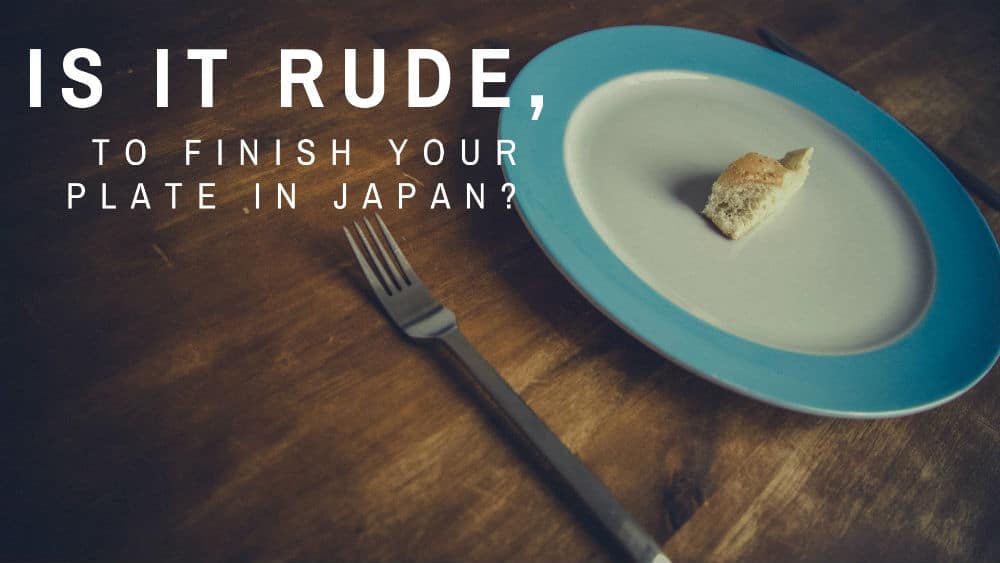
You should definitely enjoy your dinner, loudly even. Slurping is considered a great compliment to the chef so don’t hold back.
When enjoying your plate of Japanese food though, leave a little behind.
In Japan as well as China, it’s considered rude to finish your plate entirely because it suggests that you didn’t receive enough food.
Do Japanese eat avocado?
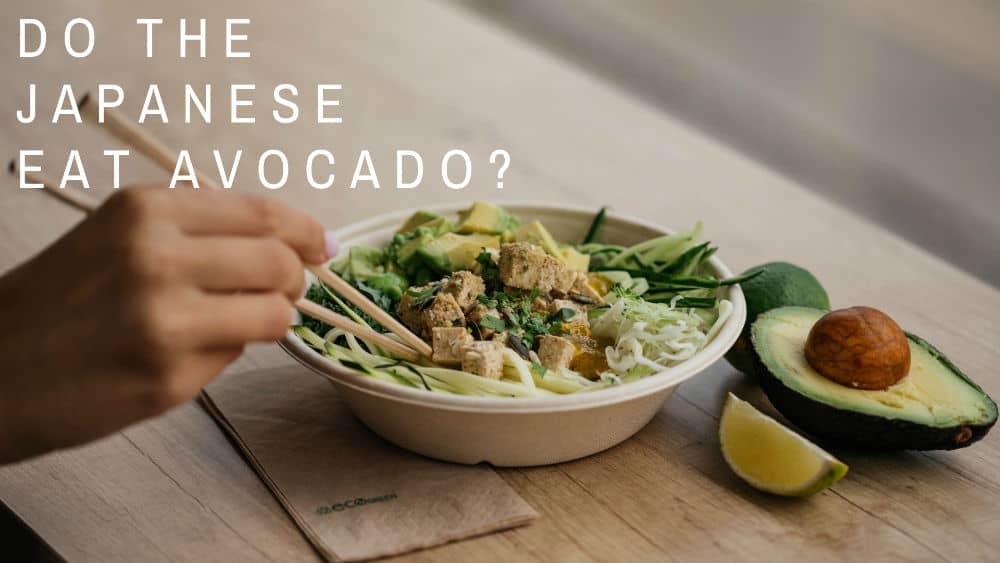
Japanese people do eat avocado, although they have only started doing so recently.
Avocado is not grown domestically much so most of the consumed vegetables of this kind are imported from Mexico.
Avocado is therefore more of a Mexican ingredient than it is a Japanese one.
Do Japanese burp after meals?

There are a few things considered bad table manners in Japan, and burping is one of them:
- burping
- blowing your nose
- audible chewing sounds
- moving around food with the eating side of your chopsticks
So no, the Japanese do not burp after meals.
What is a typical Japanese diet?
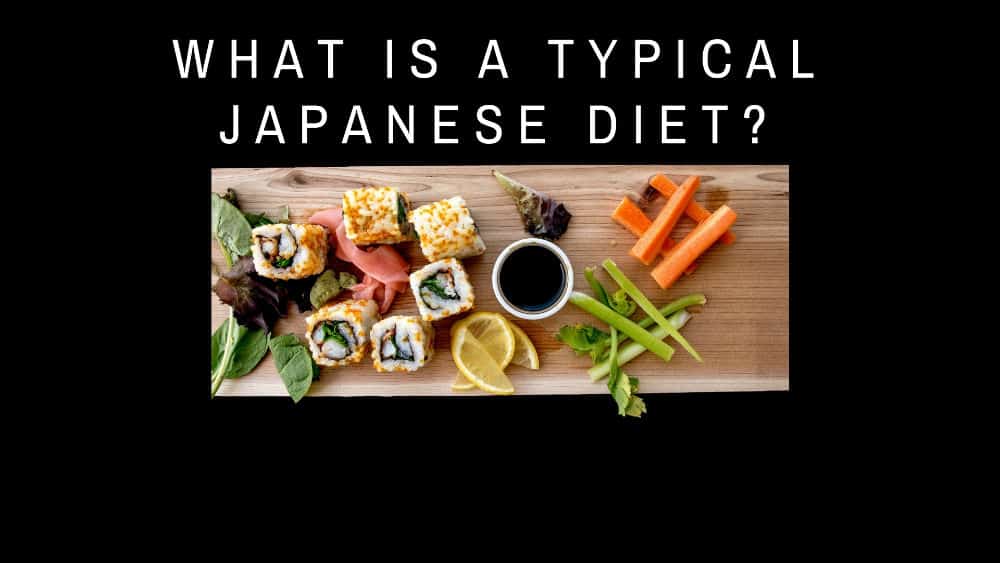
The typical Japanese diet consist of a lot of rice meals, although they eat a lot more noodles, like ramen, than their Chinese neighbours.
More like Korea, which lies in between the two nations.
They also eat a lot of fish, mostly raw in sushi and sashimi dishes or fermented like katsuobushi and a lot less meat than most western countries.
What kind of food do they eat in Japan?
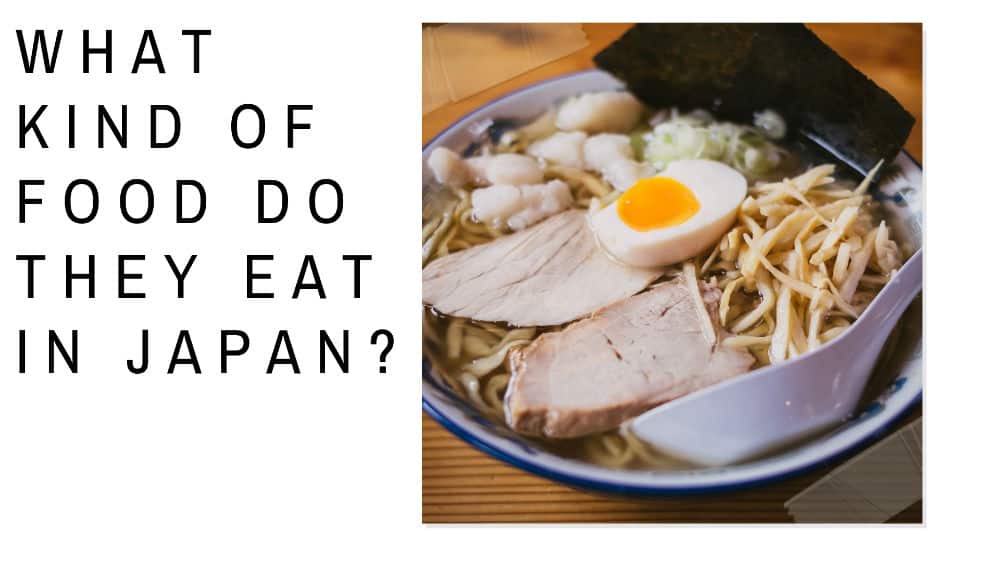
There are a few different types of food most Japanese eat at home during a week:
- White rice
- Noodles like ramen, udon, somen, and soba
- Vegetables like green onion and cabbage
- Soy products like soy sauce, edamame, miso, and tofu
- Fish such as fermented tuna or fresh salmon
- Different types of tea like green tea
- Fruit such as tangerines or grapes
Is Japanese food healthy?
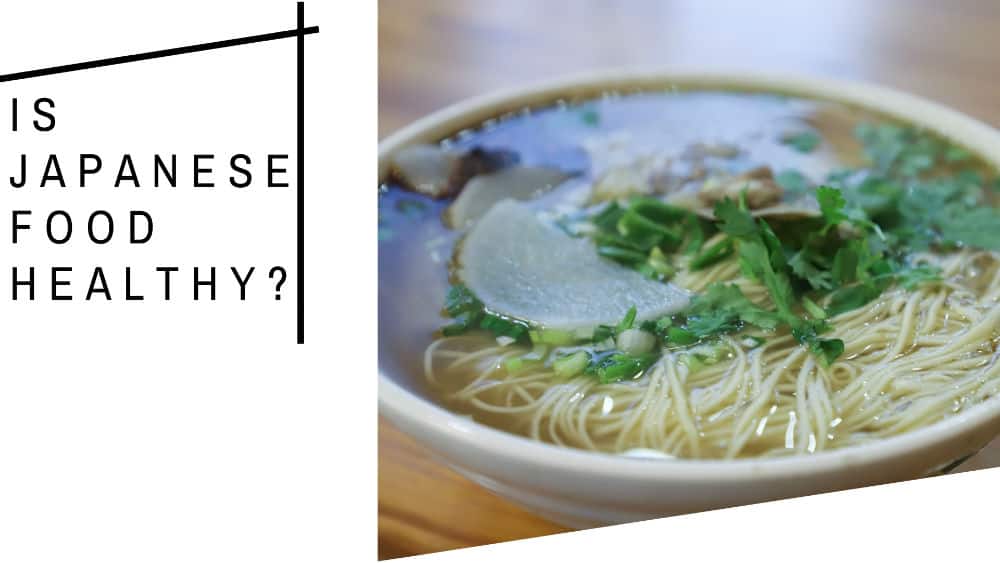
When going to a Japanese American restaurant, you might not get a super healthy meal. Though sushi is light and healthy, most teppanyaki places will use a lot of red meat.
In Japan their diet is well balanced, with more fish than meat and a lot of vegetables cooked in broth.
Since they make everything fresh there is not much processed food the meals are low in calories and full of nutrients.
What do Japanese people have for lunch?
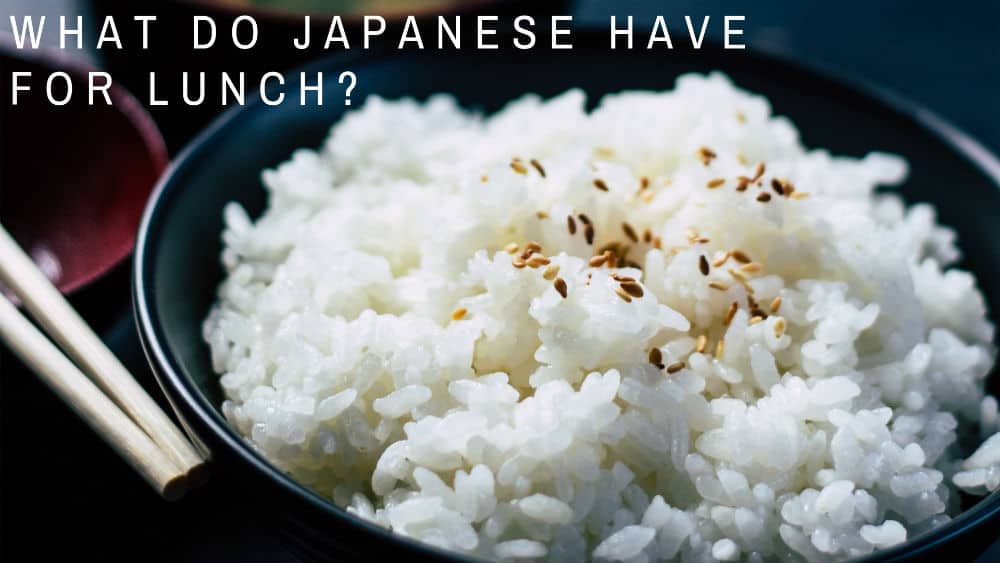
The Japanese diet largely consists of rice and noodles, so for lunch they oftentimes eat a rice or noodle bowl with steamed vegetables.
This could be a dashi broth with noodles or a nice ramen soup.
Do the Japanese eat bread?

The Japanese don’t eat bread like we do. Instead, they eat rice with every meal, or noodles for a main dish.
Even at breakfast, which is considered the most important meal of the day in Japan, rice is served. Not bread, although it differs per region.
A lot of Japanese people eat toast and bread, like everybody else too. Japanese bread-making was introduced during the invasion of the Portuguese more than 350 years ago.
Do Japanese eat fish everyday?
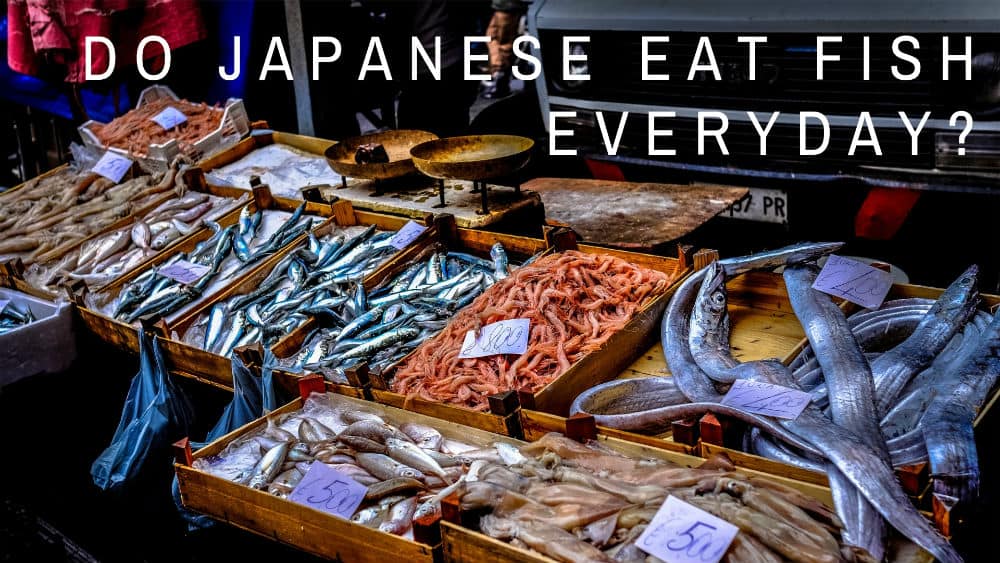
The Japanese don’t eat fish literally everyday because they might eat pork or beef once in a while as well, but on average they eat about 3 ounces of fish per day.
This is about 6 times as much fish consumption as the average person in America.
What is a typical Japanese breakfast?
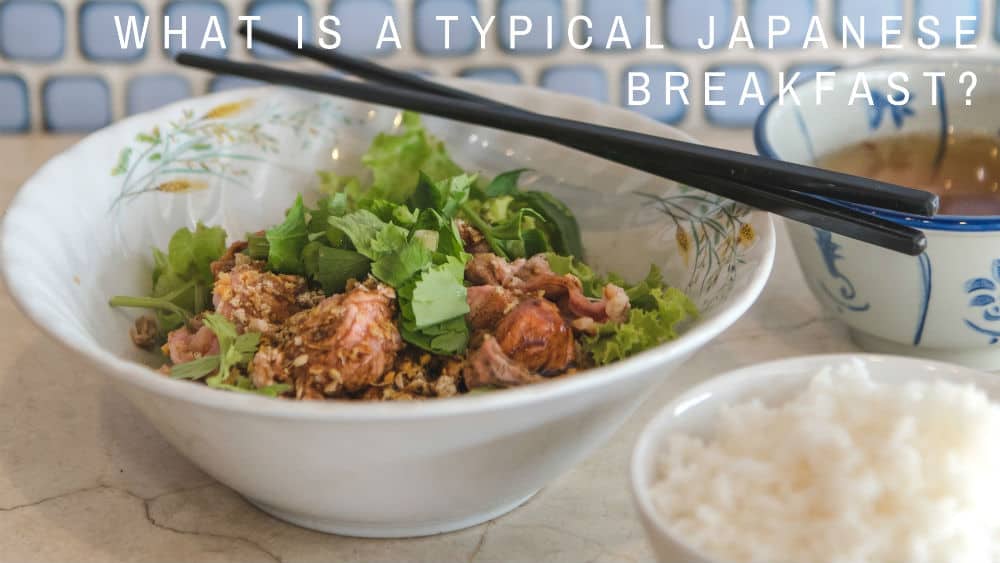
Japanese consider breakfast to be the most important meal of the day, so to start of the day well, they usually eat a complete meal:
- steamed rice
- miso soup or dashi broth
- grilled fish
- an assortment of side dishes, mostly vegetables
What do poor Japanese eat?

The poor community in Japan also has to eat, and while a typical Japanese meal may include fish, the poor more often choose cheap meats like pork and chicken to substitute a protein source.
A meal would be steamed rice, some chicken, and less expensive or often homegrown vegetables.
Someone pointed out they eat a can of mackerel marinated in Soy Sauce a lot too. They are all over Japan and easily available in Asian Supermarkets.
All you need is a small bowl of Rice and a pair of chopsticks. Mackerels or salmons typically are very nutritious and can contain up to 5 times the protein of beef.
The canned Mackerels have other flavors such as Miso, Brine, etc, and are very tasty, and they are readily available for both the wealthy and the poor. You can even eat them without rice.
Bottom Line
Do you want to have the best and memorable Japanese food experience?
Well, it can be a challenge to have the best and memorable Japanese food experience, especially when you don’t understand that Japanese language and food culture.
When you visit Japan, you will realize that most of the restaurants have a menu with only one language—Japanese.
However, this should not hinder you from enjoying one of the above sumptuous Japanese dishes.
You can opt to hire a private tour guide, who can assist in translation, and also in choosing the best Japanese dish.
In addition, they will also make your orders hassle-free since they understand the Japanese food culture.
Check out our new cookbook
Bitemybun's family recipes with complete meal planner and recipe guide.
Try it out for free with Kindle Unlimited:
Read for freeJoost Nusselder, the founder of Bite My Bun is a content marketer, dad and loves trying out new food with Japanese food at the heart of his passion, and together with his team he's been creating in-depth blog articles since 2016 to help loyal readers with recipes and cooking tips.

